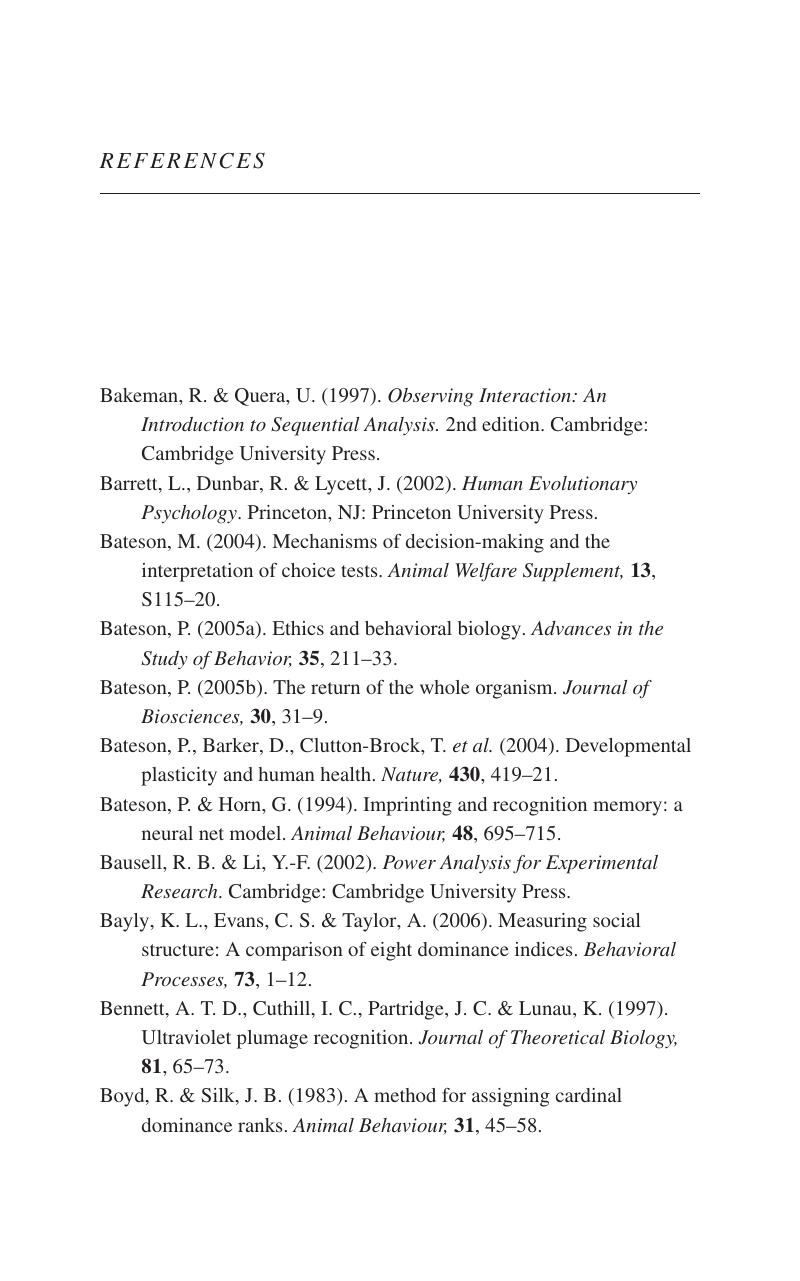Book contents
- Frontmatter
- Contents
- Preface
- 1 Introduction
- 2 Think before you measure
- 3 Getting started
- 4 Individuals and groups
- 5 Recording methods
- 6 The recording medium
- 7 How good are your measures?
- 8 How good is your research design?
- 9 Statistical analysis
- 10 Analysing specific aspects of behaviour
- 11 Interpreting and presenting findings
- Appendix 1 Units of measurement
- Appendix 2 Some statistical terms
- Appendix 3 Advice on statistics textbooks
- Appendix 4 Checklist to consult before publication
- References
- Index
- References
References
- Frontmatter
- Contents
- Preface
- 1 Introduction
- 2 Think before you measure
- 3 Getting started
- 4 Individuals and groups
- 5 Recording methods
- 6 The recording medium
- 7 How good are your measures?
- 8 How good is your research design?
- 9 Statistical analysis
- 10 Analysing specific aspects of behaviour
- 11 Interpreting and presenting findings
- Appendix 1 Units of measurement
- Appendix 2 Some statistical terms
- Appendix 3 Advice on statistics textbooks
- Appendix 4 Checklist to consult before publication
- References
- Index
- References
Summary

- Type
- Chapter
- Information
- Measuring BehaviourAn Introductory Guide, pp. 165 - 169Publisher: Cambridge University PressPrint publication year: 2007

